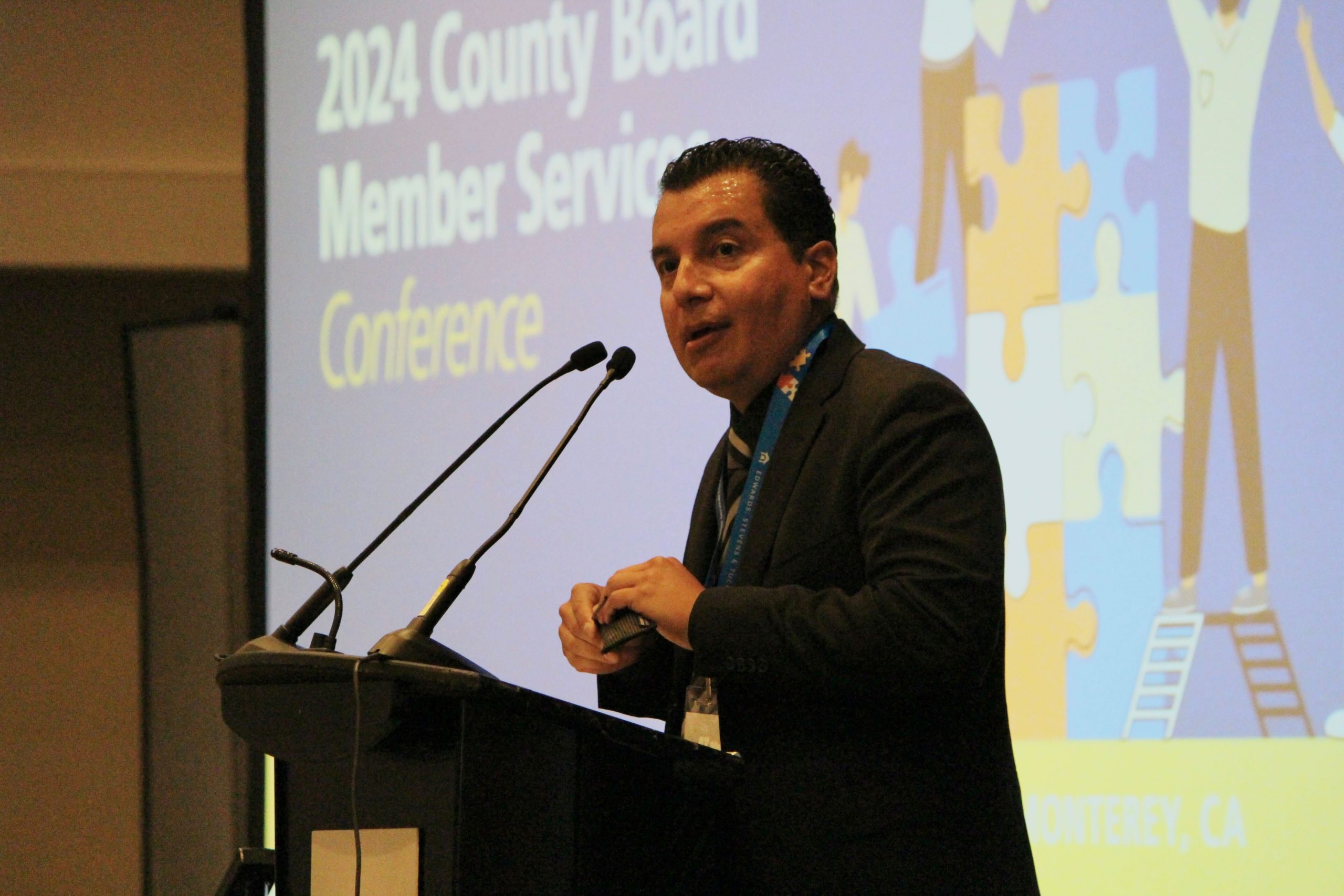Negotiating labor contracts is never easy, even in the best of times. Yet, the unprecedented scrutiny of school operations brought on by the pandemic means that collective bargaining is more public and more complicated than ever before. Deep disagreements about how best to allocate funds to strengthen schools and improve student outcomes — combined with the false perception that schools are flush with money — has created difficult terrain for labor negotiations.
That is why CSBA hosted a webinar Aug. 18, “Collective Bargaining in Divisive Times,” featuring an expert panel of education leaders — including trustees, a superintendent, a labor relations specialist and legal experts — moderated by the association’s in-house bargaining expert with more than 20 years of experience, Keith Bray.
Key themes that emerged through the discussion were the board’s role in setting the vision and direction under with negotiations occur, ensuring the fiscal health of the district, being accountable to the community without revealing confidential information, and creating an atmosphere of transparency and trust.
“It’s easy to start with one piece, and that is to remember our main responsibility as a board member is to ensure the fiscal health of the districts we are serving in,” said William S. Hart Union High School District trustee Cherise Moore. “That means you are not necessarily directly engaged in negotiations as they are happening. You want to be able to set the direction of where the district is headed and have collective bargaining feed into that process.”
In Upper Lake Unified School District — a small, rural district bordering the Mendocino National Forest — that means getting “back to basics,” according to Superintendent Giovanni Annous. “The board and superintendent went back to the basics of understanding our core values, and I think every district should have core values when it comes to their employees and how they are being treated,” he said. “We aim for the best working conditions and best compensation possible with a strong, certified-positive budget.”
Many panelists talked about the importance of a guiding document, such as a strategic plan or Local Control and Accountability Plan, in providing direction in negotiations. The William S. Hart Union HSD board sets goals in five-year increments that can be used as a driving tool in collective bargaining.
“You really focus on [bargaining] being a positive relationship that is built around and focused on trust, establish the parameters and the structure, and you want to be able to give authority of what negotiations can look like with your staff and team members who are at the table,” said Moore. “Again, setting an environment that is positive and built around trusting relationships, ensuring the climate is one that supports negotiations in a positive way.”
“Setting the direction is key, as is knowing how you are going to set that direction,” added CSBA Chief Legal Counsel Robert Tuerck. “Remember what your goals are — what’s in your strategic plan and your LCAP — and how does that inform the direction that you’re giving. You’ve got to know your budget so you can understand what you can and can’t offer — your CBO is going to play a critical role in that. You should also have a pretty good understanding, especially in this competitive market, of what’s your neighbor doing? What are similarly situated districts paying?”
One invaluable resource in this process is the new Resource Library from the CSBA District and County Office of Education Legal Services, which includes more than 10,000 documents of searchable salary schedules, collective bargaining agreements and other resources to help local educational agencies at the bargaining table.
Trust and transparency
Another key aspect of the board’s role in supporting negotiations is creating an atmosphere of trust and transparency. Part of that is knowing bargaining timelines and when it is appropriate for the board to set priorities, such as the balancing of employee compensation with programming and maintaining a balanced budget.
“That balancing act is going to be unique for each board and each community,” said Josh Daniels, Oakland USD’s chief governance officer. “Making sure that you, as a board, get a chance early on to have those discussions in closed session with your chief staff. Individual board members asking constituents how they would balance those benefits, explaining that you usually can’t have all three, is a role that the board can play — but it needs to be done early on.”
Transparency with labor partners can also help all parties understand what a district is working with financially, said San Juan USD senior director of Labor and Employee Relations, Daniel Thigpen, whose district created a Budget Review Committee to provide some of this transparency.
The committee happens away from the bargaining table and involves the district’s chief financial officer, the superintendent, deputy superintendent and bargaining unit leadership. “We open the books and allow them to go line-by-line and ask questions,” Thigpen explained. “We see it as an opportunity to educate. Being transparent and opening up space for that kind of dialogue allows them to go to their members when they’ve advocated for as much as they can and say, ‘Trust us, we got as much as we could and here’s why.’ That simple act of making the invitation can really help start changing the tone at the bargaining table.”
Handling complaints
A reality for every board member is that you are going to get complaints about how the district is handling negotiations.
“You are the community representative — you may get the emails, you may get the phone calls when some think things are not going as they want them to go,” said Moore of William S. Hart Union HSD. “Your role as the board member is often to redirect and remind that you are not at the table. Your role is to maintain true confidentiality and ensure the tone and the trust is clear.”
She said ways to maintain that tone and trust is to ensure transparency in the budget and adherence to the strategic plan.
Oakland USD’s Daniels explained ways to respond to community members who might confront board members. The first “is to breathe and try not to respond if you are in that moment of frustration,” he said. “You can say, ‘I appreciate your comments. I wish I could speak to you about it, but I am prohibited from doing so. I will take your comment and all others I received into closed session, and when this is over, I would love to speak with you about the process.’ This allows you to not just sit in that frustration and make constituents feel heard while maintaining your duties in negotiations.”
Many other topics were covered during the webinar, including why it is not best practice to have a board member be a part of the negotiating team and sample topics that could appear at the bargaining table this year.
Watch the full webinar recording: https://youtu.be/EMHaEQ4jNDk




